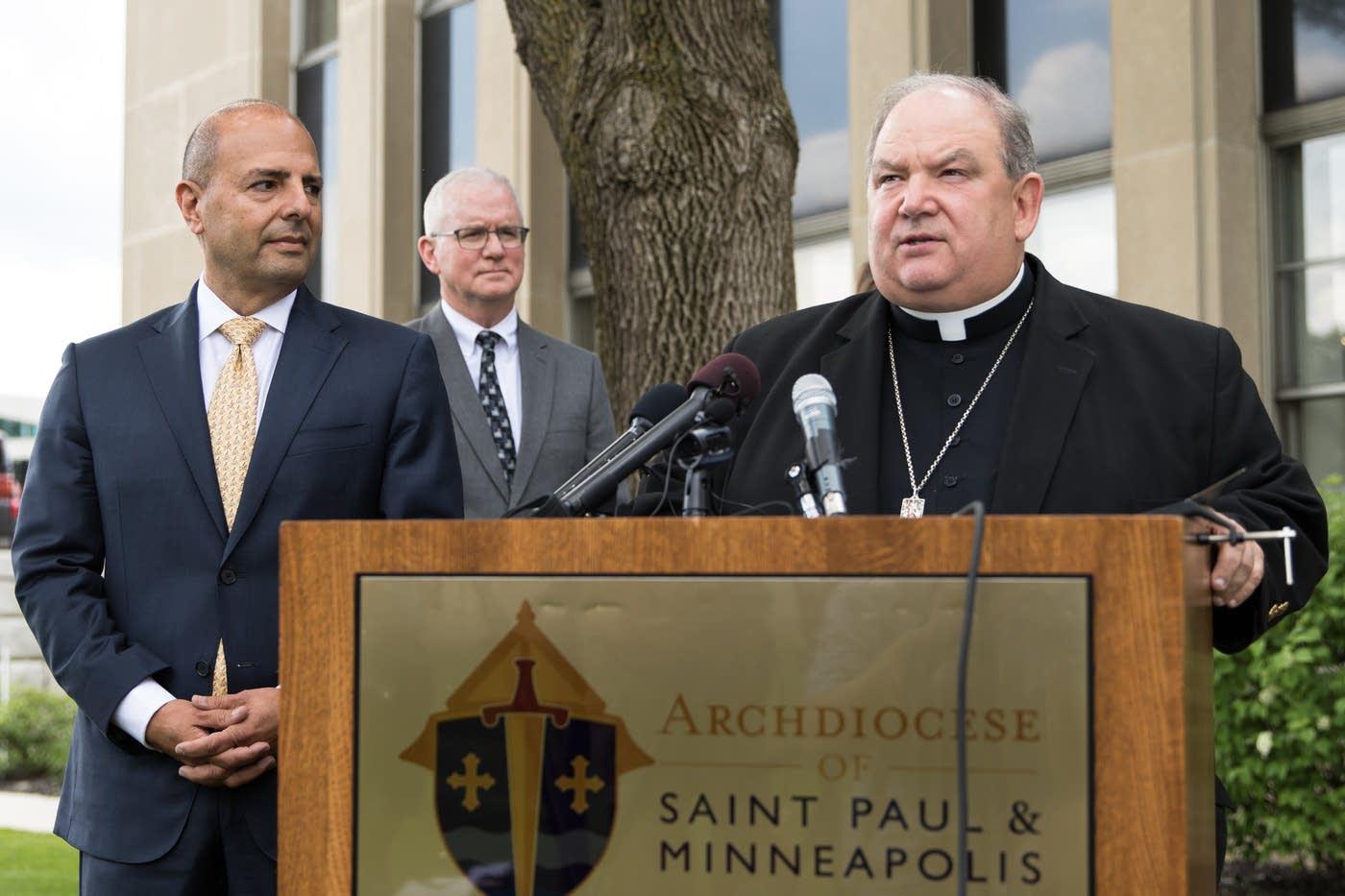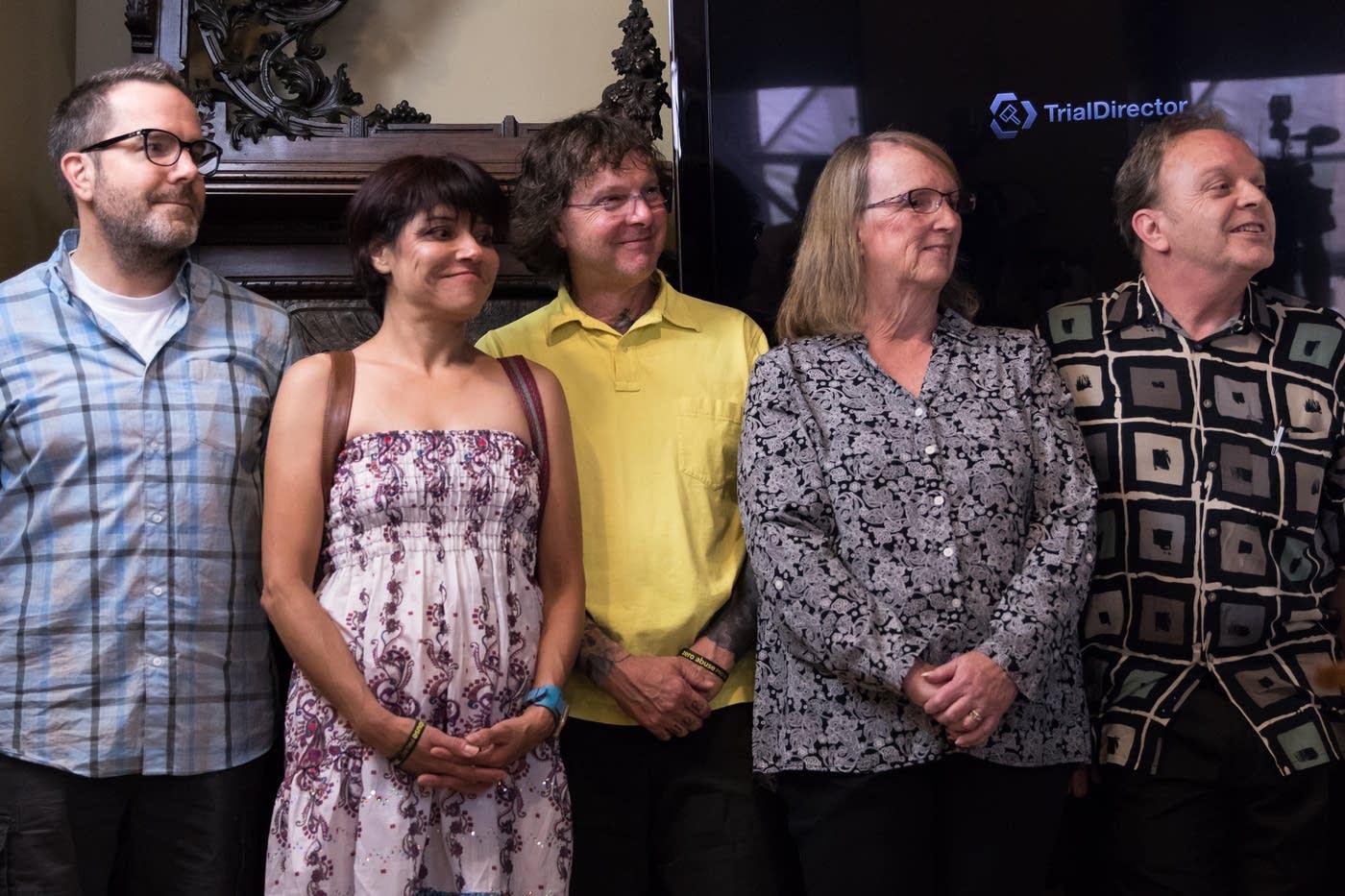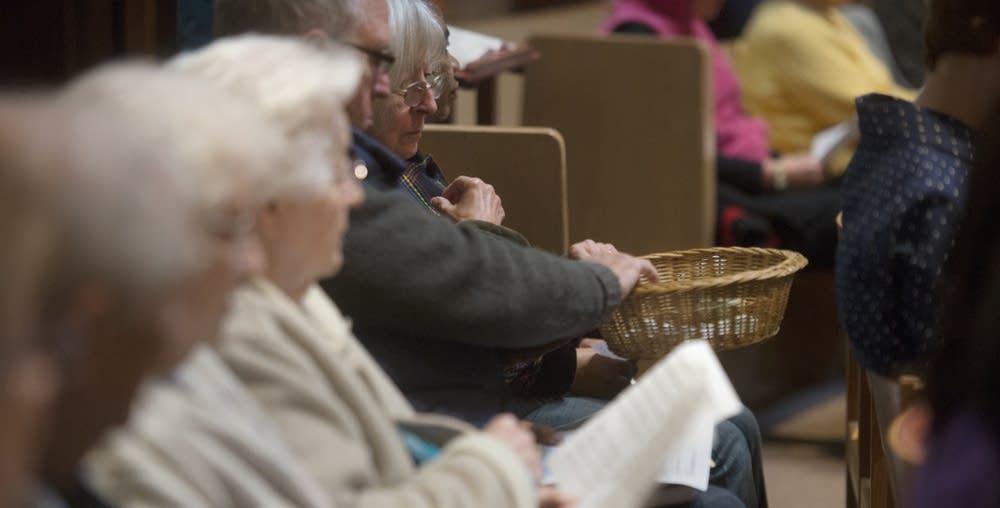|
Twin Cities archdiocese bankruptcy settlement: The basics
MPR News
The Archdiocese of St. Paul and Minneapolis and survivors of clergy abuse have reached a $210 million agreement to compensate those victims and lead the archdiocese out of bankruptcy. What is this settlement all about?The archdiocese sought Chapter 11 bankruptcy protection in 2015, after facing huge potential costs tied to clergy abuse. At the time, the church was dealing with the aftermath of reports that showed an ongoing cover-up of clergy sex abuse by then-Archbishop John Nienstedt and other top officials, including three clergy abuse lawsuits and concerns mounting over the cost of future claims. • Nienstedt: Bankruptcy best path for clergy sex abuse claimsAfter nearly 41 months of bankruptcy proceedings, a total of $210,290,724, will go into a fund to pay survivors, with the amount for each survivor to be determined. Besides the financial settlement with the Twin Cities archdiocese, survivors' attorney Jeff Anderson said the deal "actually advances the ball on child protection in a way that's never really been done in this country." He didn't elaborate and declined to take questions afterward. Anderson said a formal reorganization plan will now be submitted to a bankruptcy judge for approval, and then it will be sent to the victims for a vote. Anderson expected they will readily approve it. How many victims are included?About 450 survivors of clergy abuse are represented in the settlement. How much of the settlement will be paid by the church?The settlement's exact total is $210,290,724. About $40 million will be paid by the archdiocese and parishes. Insurers will pay $170 million, said Tom Abood, chair of the Archdiocesan Finance Council. This is the largest bankruptcy settlement of its kind in the country between Catholic church leaders and abuse victims. It's roughly $50 million more than the $156 million archdiocese leaders offered last year. Fees for attorneys have yet to be determined. The archdiocese says legal fees would come out of the money set aside for victims. Abood said total legal costs for the archdiocese and parishes were approaching $20 million with about $10 million unpaid. Didn't the archdiocese already reach a settlement on clergy abuse?It did, but in a different case. The Archdiocese of St. Paul and Minneapolis and the Diocese of Winona settled a landmark public nuisance lawsuit brought by clergy abuse victims in October 2014. St. Paul attorney Jeff Anderson filed the suit in Ramsey County on behalf of a man who said he was sexually abused as a child by the Rev. Thomas Adamson in the late 1970s. Adamson, who served in the Twin Cities archdiocese and the Winona diocese, is no longer a priest. The lawsuit accused the Twin Cities archdiocese and the Winona diocese of creating a public nuisance by keeping information on abusive priests secret. Anderson argued in court that the secrecy placed children at risk of abuse from unknown offenders. • Clergy sex abuse settlement: The case -- and the law -- at a glanceThe settlement was part of the first lawsuit brought under Minnesota's Child Victims Act, which was enacted in May 2013. The law lifted the statute of limitations for new cases of sexual abuse against children, opened up a three-year window (from 2013 until 2016) for victims to file lawsuits for past abuse and forbade lawsuits for past abuse after that three-year window expired. Before the Child Victims Act was passed, Minnesota state law, as interpreted by its Supreme Court, required victims of child sexual abuse to file any lawsuits before they reach age 24. How have the church's bankruptcy proceedings gone?The bankruptcy case proceeded slowly as attorneys argued over how much money the archdiocese should have to pay. The archdiocese reported its net worth was $45 million. But attorneys for the victims maintained that the archdiocese's true worth was over $1 billion, counting assets of its 187 Roman Catholic parishes, as well as schools, cemeteries and other church-related entities. Victims' attorneys said those assets should be used to make more money available for victims. Archdiocese leaders last year objected to a creditors' plan they said would strip the archdiocese of all assets required to pursue the church's mission. That came after survivors rejected the reorganization and compensation plan proposed by the archdiocese. What does this mean for parishes and schools?It's unclear, so far, what this agreement will mean for parishes and schools in the archdiocese. A federal appeals court last month affirmed a decision by U.S. Bankruptcy Judge Robert Kressel in 2016 that the parishes and other nonprofit entities were independent, meaning their assets could not be tapped in the bankruptcy case. Ultimately, the fate of parishes, schools, hospitals and other entities within the archdiocese falls to the federal bankruptcy court and the judge presiding over the case. In most diocesan bankruptcy cases that have happened across the country, parishes and schools have been treated as separate entities. • From the video archives: Archdiocesan finances explainedIn three dioceses' filings — Tucson, Ariz., Spokane, Wash., and Wilmington, Del. — schools, parishes and other entities were directly affected. The Diocese of Tucson's settlement classified parishes as independent corporations and froze parish expansion projects. During the Diocese of Spokane's 89-month bankruptcy, a judge ruled the opposite: that churches, schools and other assets belonged to the diocese, and could be sold, if necessary, to pay victims. In the case of the Wilmington diocese, many parishes' investments were found to have been commingled with diocesan funds, which made them available to creditors. Despite the fact that parishes believed their assets to be safe, they were lost in the proceedings. A bankruptcy judge later told parishes they had the right to sue the diocese. Why would a diocese file for bankruptcy?A Chapter 11 bankruptcy filing is designed to reorganize. The ultimate goal of a bankruptcy like this is to allow the archdiocese to emerge from the process as a functional business. Filing for bankruptcy allows an organization to put together a plan to pay its debts by dividing its assets among its creditors. When an organization files for bankruptcy, it must declare its assets (what it owns) and its liabilities (what it owes). Chapter 11 is a specific type of bankruptcy that allows an organization to restructure so it can pay its debts. (Another type of bankruptcy filing, under Chapter 7, is when an organization liquidates to pay its creditors). A Chapter 11 bankruptcy filing puts a hold on an organization's assets (limiting what a diocese or archdiocese can do with what it owns), but allows the organization to continue operations. During a reorganization, assets are scrutinized, claims are made and the court decides who gets what. Have other Catholic dioceses gone through this process?The Archdiocese of Portland, Ore., became the first Roman Catholic diocese in the United States to file for Chapter 11 bankruptcy in 2004, just before jury selection for a $130 million negligence trial. At least 14 other Catholic dioceses in the U.S. — there are nearly 200 dioceses in the country — have filed for bankruptcy since then, including three of Minnesota's seven. The Archdiocese of St. Paul and Minneapolis filed for bankruptcy in 2015. Later that year, the Diocese of Duluth did the same. Two years later, the Diocese of New Ulm followed suit. A fourth Minnesota diocese, the Diocese of St. Cloud, announced in February that it also plans to petition for Chapter 11 bankruptcy, but it so far has not gone forward with the plan. Also in Minnesota, the Crosier Fathers and Brothers, a religious order, filed for Chapter 11 bankruptcy protection in 2017 and agreed to a $25.5 million settlement to pay 43 sexual abuse survivors. Not every bankruptcy is the same. The process in Portland, Ore., lasted 33 months. The Diocese of Spokane's bankruptcy lasted 89 months. But in other places, such as San Diego, where the diocese's bankruptcy filing was dismissed, the process lasted only six months. Has the archdiocese ever apologized for the abuse?In July 2016, Archbishop Bernard Hebda offered a formal apology and admitted wrongdoing in the case of Curtis Wehmeyer, a former priest accused of molesting three boys. The apology and admission were part of an agreement in a criminal suit brought by the Ramsey County Attorney's Office that alleged the Archdiocese of St. Paul and Minneapolis turned a blind eye to Wehmeyer's repeated misconduct. Prosecutors dropped criminal charges in the case, and the archdiocese publicly admitted wrongdoing for the way it handled sexual abuse allegations against the defrocked cleric. The agreement also called for Hebda to personally participate in at least three restorative justice sessions with abuse victims. "The Archdiocese admits that it failed to adequately respond and prevent the sexual abuse" of the three victims, the archdiocese said in court papers. "The Archdiocese failed to keep the safety and wellbeing of these three children ahead of protecting the interests of Curtis Wehmeyer and the Archdiocese. The actions and omissions of the Archdiocese failed to prevent the abuse that resulted in the need for protection and services for these three children." Then-Archbishop John Nienstedt resigned from his post 10 days after the criminal charges were filed in June 2015. Hebda, who was installed as the Twin Cities archdiocese's permanent leader in May 2015, after spending a year as the church's temporary administrator, apologized for its failures at a news conference the day the agreement was announced. "Those children, their parents, their family, their parish and others were harmed. We are sorry. I am sorry," he said. He apologized again to survivors on behalf of the archdiocese. "The church let you down," he said. "I am very sorry."
|
.
Any original material on these pages is copyright © BishopAccountability.org 2004. Reproduce freely with attribution.



